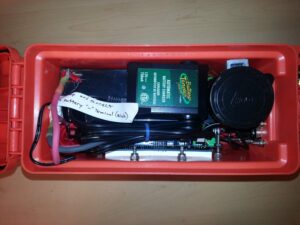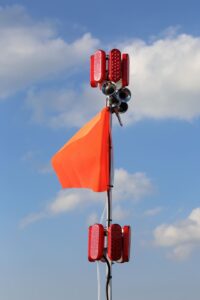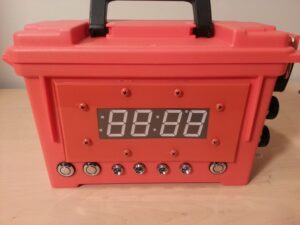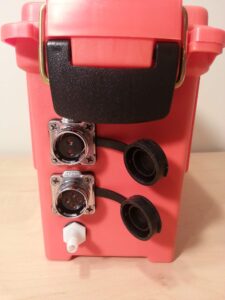Pursuit Races, 2022
10th Annual SCSC Pursuit Races
Saturday, July 16th at 11:00 hrs
Notice of Race – Sailing Instructions
Competitors List – Start Times
Results
The Pursuit Race is an exciting twist on our traditional races!
Boats will start based on handicaps – High-PHRF boats first, Lower-PHRF boats later. Each class of boat has their own start time. Hence, faster boats will PURSUE the slower ones. The idea is to have everyone finish at the same time (and scare the heck out of the Race Committee). The first boat across the finish line is the winner!
Start times are created for all boats registered with SCSC. These times will dictate when your boat starts after the conclusion of the initial start sequence. The final start times for registered boats will be posted on Friday evening.
Boats trailing behind may be “scored in place” to keep races rolling. The Race Committee will notify boats via VHF if they have been scored this way.
There is talk about turning this into one big, huge, long race in which boats will record their own finish times… Stay tuned for details if we go this route.
If you intend to race in a configuration not listed in the “Competitors List” document above (ie: spinnaker or non, different headsail size, etc) you must let the Race Committee know by NOON FRIDAY. You may also request optional configurations – ones you may or may not sail with. The R/C will add all requests to the Start Times form, and you may choose your configuration by announcing at your start.
Sign-up is not required unless you have a configuration change which affects your handicap.
The Pursuit Races are open to all members of the club, and all boats with an assigned handicap.
For questions or to submit handicap changes, use the following form by Friday at Noon:
2022 Results
- Yacht of the Year
- Spring Series
- Summer Series
- Fall Series
- Breaking Waves
- Carlson Classic Regatta
- Autumnal Equinox
- Beercan Series
- Dave O’Donnell Memorial Regatta
- Pursuit Races
- Labor Day Crew Swap Regatta
- Commodore’s Cup
- Frostbite Races
May 24, 2022 9:08 pm Race Status
currently scheduled for Saturday, May 28th, have been canceled.
Racing is anticipated to resume at our next scheduled race on Tuesday, May
31st.
May 20, 2022 5:41 pm Race Status
and the Spring #1 race has been postponed to June 23rd.
Racing will resume when the river drops below 683 ft.
Competitors List 2022
Sailing Instructions and Notices of Race
Notice of Race
- 2022 Yacht of the Year NOR
- 2022 Beercan Series NOR
- 2022 Dave O’Donnell Memorial Regatta NOR
- 2022 Pursuit Races NOR
- 2022 Labor Day Crew Swap Regatta NOR
- 2022 Commodores Cup NOR
- 2022 Frostbite NOR
Sailing Instructions
- 2022 Yacht of the Year (changes)
- 2022 Beercan Series (changes)
- 2022 Dave O’Donnell Memorial Regatta
- 2022 Pursuit Races
- 2022 Labor Day Crew Swap Regatta
- 2022 Commodores Cup
- 2022 Frostbite Races
- *Race Course Diagrams – NEW FOR 2022!
- Course Board Examples
- Time Allowance Calculator
- *US Sailing 2022-2024 Hearing Request Form (protest form)
- US Sailing 2022-2024 Hearing Decision Form (for protest committee)
Other Documents
- *Emergency Action Card – All boats must have this on board!
- Skippers Meeting Overhead Presentation
* Prints available from the Race Committee at any event.
How to Host a Beercan Party
Here are a few tips to help you plan your Beercan party!
- Sign up on the Beercan page.
- Plan for about 40-60 people to attend; more if the weather is nice, less if poor.
- The budget is stated on the sign-up page. The club will reimburse for receipts up to that amount.
- If you are sailing, having a shore-side team is helpful, but not necessary.
- Plan for the weather! If it is going to be cold, hot dishes are king! If it is hot, simple cold salads, burgers and dogs work nicely.
- Crock pot dishes are easy, and always welcome. You can also take the easy way out and order pizzas or other delivery-type food. Just keep the budget in mind. Two deliveries of hot food is a good idea.
- There are grills and electric outlets at the point that can be used for food prep. Check the tanks of the gas grill to make sure they are full. The club has tanks in the shed you may use – please refill them if necessary.
- Crockpots and similar items can be plugged in at the SCMC banquet room kitchen while racing, then moved to the point for the party. (Check with marina for permission)
- A couple of days before the beercan, check the coolers in the club shed to see how much water and pop there is (contact any board member for the lock code to the club shed). If more is needed, please stock up. Pop, water, and non-alcoholic beverages are good choices. People can BYOB. While you are in the shed, check supplies of plates, utensils and napkins. If more are needed, please stock up.
- On the day of the Beercan, fill the coolers with ice, close the drain, and transport them to the point.
- Take two trash bins to the point – one for recycling and one for trash. The club also has folding tables in the shed if needed.
- At the end of the Beercan, make sure everything is cleaned up and dispose of trash and recycling. Drain and put the coolers back in the shed. The recycling dumpster is near the gin pole.
- Save all receipts and send them to the treasurer.
SCMC members or renters wishing to host:
Please book the point in your name with SCMC (have them cancel the SCSC booking), or choose another venue as you see fit. This applies to all beercan events, including those with no venue currently assigned.
RCST – Race Committee Start Timer
The purpose of the R/C Start Timer is to simplify the duties of the Race Committee. It accomplishes this by automating horns, displaying current sequence time, and by replacing the time-sensitive flag signals with automated lights.
This timer has been born from a proposal we made to the US Sailing organization for a lighted start sequence. That proposal can be seen in other posts on this page, as well as in the Sequences appendix of this user’s manual.
The latest version of the Start Timer is complete as of 2020. It has been used for two seasons with our club, the local sailing school, and at a club on Lake St. Clair.
The Hardware:
The unit comes with its own battery, air compressor, buzzer, and digital display inside of a water-resistant box.
- Left Button: Power On
- Second Button: Run Sequence
- Right Button: Manual Horn (sounds as long as the button is held)
- Display: Count down (or count up) during the sequence. Also shows the configuration menu.
- 4-LED’s below screen: Ultra-bright, used to signal approaching flag changes (30 sec, 20, 10, 5,4,3,2,1,0)
- Built-in Buzzer: Audible alerts to the crew of the R/C boat of upcoming flag changes – buzzes in tune with the LED’s. Useful so your crew can watch the line instead of the timer screen!
The horns are made by Wolo and are easily audible in all directions for 2+ miles. It’s a good idea to mount them away from R/C personnel. They can be muffled if necessary.
The battery is a 12v 9Ah AGM and depending on use, rarely needs charging. Charger is built in. The timer has a low battery indicator which starts blinking when you’re down to around 5-10 sequences of battery life left. I typically charge it once mid-season (after 2-3 months of use, or around 50 sequences using both horns and lights).
The display uses large 1.2″ digits and can be seen from a distance. It can wash out in bright light, so position the display to not face the sun. The 4-LED’s below the screen can be seen in all lighting conditions – they and the buzzer make the screen redundant within 30 seconds of signals. After all – you should be watching the line, and not the timer!
Everything is water resistant. It can take heavy downpours! The only caveat is that it contains an air compressor – there are tiny air holes on the back side. Do not lay it face up in standing water or some water may be sucked in when the horns operate. Even if that happens, it should continue to run just fine. Simply remember to dry it out when you get back to shore. Note that this unit has been tested in fresh water only – your experience may vary in saltwater conditions.

This unit runs on an ATMega1284p processor (big brother to Arduino devices) on a custom printed circuit board.
Sequences:
The following sequences are supported, but the software can easily be updated to support ANY sequence you can think of:
- RRS 26
- RRS 26 (4-minute)
- RRS Appx U (Sound Signal)
- RRS Appx C (Match Racing)
- ICSA Appx C
- Numerous Rolling configurations and repetition settings.
- Numerous light visibility configurations.
Choosing which sequence to run is done in the menus (see the users guide for details).
Adding new sequences is done in the firmware. Such updates are emailed or posted online in the form of a small Hex file. Copy that file onto a MicroSD card (card is included, usb card reader is not), power the unit on, and your sequence or other software updates will be installed automatically.
The Lights:
(optional, but highly recommended)
This innovative concept replaces the two start sequence flags (Preparatory and Class Flag) with two sets of lights mounted vertically. Sailors simply look for the lights instead of flags: one light = one flag. Two lights = two flags. See the diagram and Sequences document for more details.
Currently, the lights are made up of super-bright leds from semi-trailer break lights. They are visible in bright sunlight from any direction at up to a mile or more. In overcast or dusk conditions, they can be seen for many miles (I may add a dimming feature for night use, if requested). They are visible in ALL conditions and have seen several years of use in hundreds of events – our sailors have found them to be easy to see, highly accurate, and the transition away from flags was easy for everyone to understand (from novice sailors to highly experienced sailors).
The benefit of lights are that they remove the “human factor” from the start sequence. Volunteer race committees often have variability in how they raise flags. +/- one second or more, is quite common. When do sailors start timing – when the flag starts to go up, or when it’s fully up? Some clubs use poles, some use pulleys, some clubs do things…other ways… In my 30+ years of running sailboat races, I have seen quite a variety of ways to raise flags, and as much variety in the reliability of timing from those signals. Why go through the hassle of recruiting/paying someone simply to raise flags when that position can be automated? Spare your crew for more important things, such as watching the line for over-earlies!
More Details
The device is very well built, and the circuits and software are highly refined, but assembly of components is very much a home-built product.
I was planning on making these, but time and supply-chain issues have put that on hold. I may be able to help others build their own if they have some electronics or software experience. Eventually, I may make this an open-source project.
More information can be found in the Users Manual and Sequence documents.
RCST Users Manual
RCST AppxA(Sequences)
Reach out us on the contact form below if you have any questions!
Start Timer Contact Form
Do you have any constructive feedback about this project? Would you like to learn more or stay in the loop? Feel free to send our development group a message:






